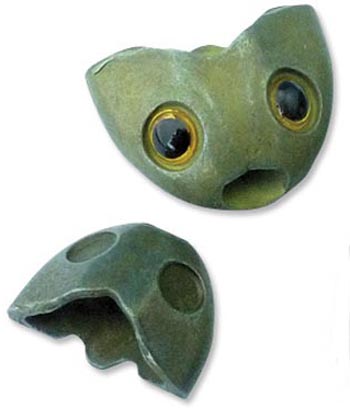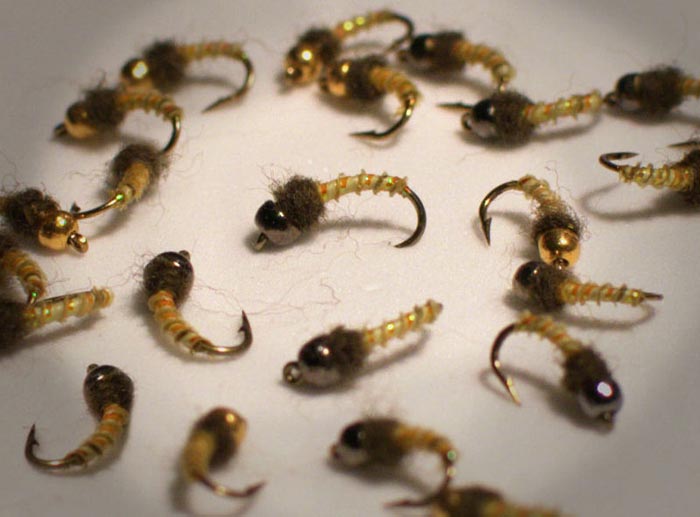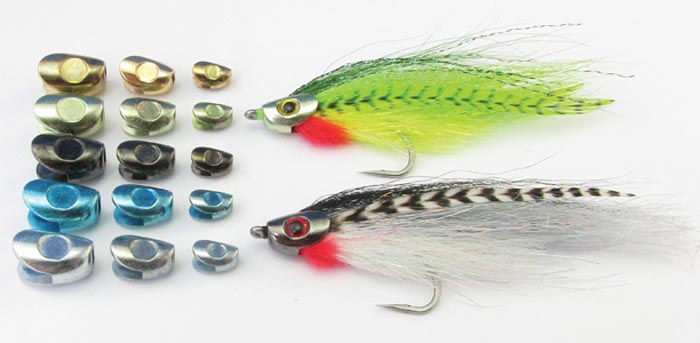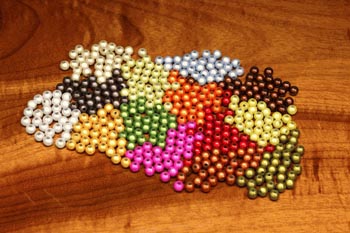By Skip Clement
[dropcap]B[/dropcap]eads, heads, and barbell eyes are designed to do three things, add weight to help the fly sink, improve visual enhancement and of course both, as well as influence how a fly swims – think jigging, retrieve, and water column. The most familiar of these additions are barbell eyes.
Lead and Dead. There is no need to use lead in fly tying, so please don’t
SIDEBAR: Remarkably, the EPA has no clear directive on how to dispose of “household” lead products, which our fishing accouterments fall under. Even more astounding is that the EPA designates lead as hazardous and advises against its “household” use.
Contradicting, “EPA’s regulations provide that wastes from households are not regulated as hazardous, and there are no limitations on the quantity of those wastes.” However, some state and even local governments as well as some states recognize their health responsibilities and require designated disposal sites which they manage.
Lost flies with lead used to add weight, pinch-on lead sinker weights, sinkers, lead wire, and the like get ingested and poison fish, birds, and mammals that consume them. Prey species consume these lead infested prey all the way up the food chain, and your fish plate may be contaminated with Pb, Atomic number 82, courtesy of your lost lead weight.”

JS Stockard – barbell eyes.
Bead sizing is given in fraction, decimal, and metric equivalents

Fish Skull Sculpin Heads.
Beads, heads, and barbell eyes vary in size, and they are often linked to hook style like barbed or barbless, hook bend, and hook-eye profile. Sometimes de-barbing is necessary so the bead can clear the bend. Debarbing is also a better way to improve fish survival. Please go barbless.
Fly tying beads fit a range of hooks
“If you are not sure of the style of hook and the bead, choose the bead that has the hook size right in the middle of the range. For example for a size 18 hook, a 5/64″ bead has a range from 16, 18 or 20. A #18 is right in the middle, and a 5/64″ bead is perfect for all size 18 hooks.” — Global FlyFisher
Fly Tying Beads
All metal beads have two different sized holes in them. The smaller hole is made to go against the eye of the hook. The larger hole faces backward so the weighted wire wrapped around the shank of the hook can be forced into the void.
The larger space on the back of the bead aids in sliding the bead around the shank of the hook and makes it easier to put on – ‘countersinking.’” — James Spicer, Intheriffle, Inc.
Fly Tying Bead Head Sizing Chart
Chart source – various.
1/16″ or 1.5MM – Hook Sizes 20-24
5/64″ or 2.0MM – Hook Sizes 16-20
3/32″ or 2.4MM – Hook Sizes 14-18
7/64″ or 2.8MM – Hook Sizes 12-16
1/8″ or 3.2MM – Hook Sizes 10-14
5/32″ or 4.0MM – Hook Sizes 8-12
3/16″ or 4.5MM – Hook Sizes 6-10
1/4″ or 5MM – Hook Sizes 4-8
SIDEBAR: Bead sink rates
Plastic beads float.
Metal beads sink slow to medium speed – depend on other materials making up the fly pattern.
Tungsten beads sink like a rock.
Plastic
Plastic beads are brightly colored and used as an attractor, spacers on articulated flies, and body parts of animals and bugs.
Bead chain
Bead chain pull beads are light and used specifically as eyes on lightweight flies. Chain pulls tend to have sharp edges when separated to make a pair of eyes and can cut thread.
Brass
Brass beads are the most common type of beads used for fly tying – usually come in several different colors.
Tungsten
Tungsten beads are similar to brass beads in appearance, but much heavier (three times heavier depending on the brand). With no added weight in the leader, the fly has a better, more natural drift and presentation. Tungsten is also non-toxic and more expensive.
Glass
Glass beads are available in to just about any color or shade of color you could imagine and are cheap. Clear glass beads imitate an air bubble on a fly and are often used to mimic mayfly and midge emergers. Glass is best beads for flies size 20 and smaller.
Faceted Beads
Faceted (shaped) beads are available in both brass and tungsten and are not entirely round – flattened around the entire bead – used as heads (fish Skulls), big bugs like stoneflies, and bigger streamers.
Sources for story: Local Atlanta fly shops, fly tyer friends, Martin Joergensen (Global Flyfisher), Tim Cammisa (DIY Fly Fishing), Tim Flagler (Tightline Productions), James Spicer (Intheriffle)
Featured Image Bead Head Cream Biot Midges by Curtis Fry – a commons image.









